
Curator’s statement
New Zealand is a place I felt instantly at home, while simultaneously feeling like an explorer eager to turn every corner. I went to New Zealand (spending about ⅔ of my time on the South Island specifically) feeling burnt out and lifeless. The magic of this country brought me back to myself. Every hike taken, every panorama viewed, and every Kiwi I chatted up took my breath away while restoring my soul. I’m sharing my itinerary with you in the hopes you can make your own magic.
The Fora Difference
Book with Emily to access exclusive perks and experiences on your trip.
Killer perks
Free upgrades, spa credits and more—we got you
Personalized recs
Customized travel planning for your style
Insider knowledge
Expert advice from people who’ve actually been there
Where to stay
Unlock perks by contacting Emily to book your trip.
Day 1: Auckland
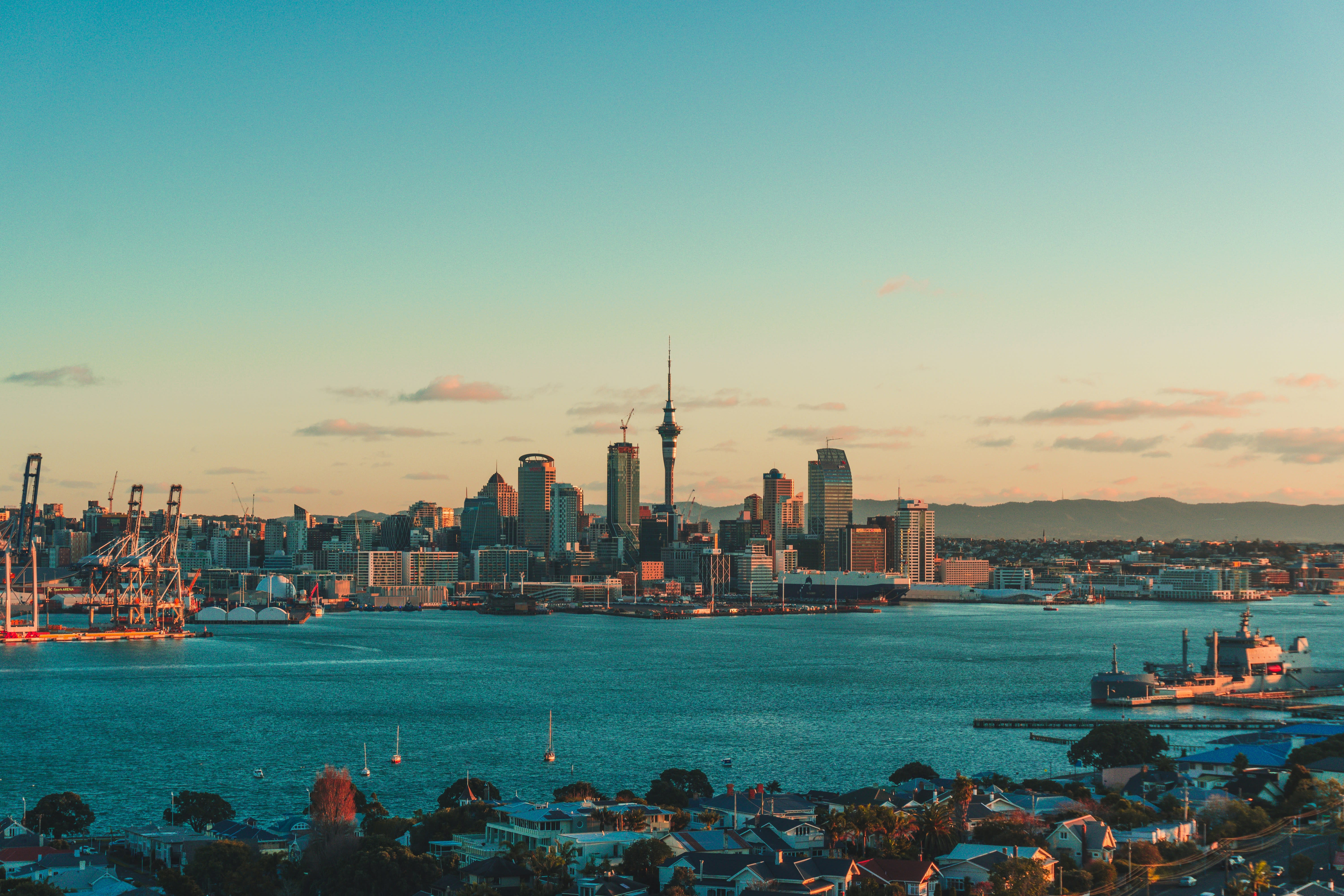
Nearly all international flights to New Zealand land in Auckland. Many tourists hop on their next flight without giving the country’s largest city a fleeting glance. I always recommend a bummer day or two when traveling. If your original flight is delayed, you aren’t having to move too much in your itinerary around or worry about missing connecting flights. And Auckland is a great city to spend 24- 36 hours exploring.
I highly recommend seeing Auckland Art Gallery, which houses many New Zealand and Pacific Islander artists. The Auckland Domain and Wintergardens is a stunning botanical retreat worth a wander. Britomart is a 9-block neighborhood of shopping, restaurants and stunning architecture. Spend a few hours walking around the CBD along High Street and near the waterfront. The day will be done before you know it.
Day 2: Waitomo or Rotorua
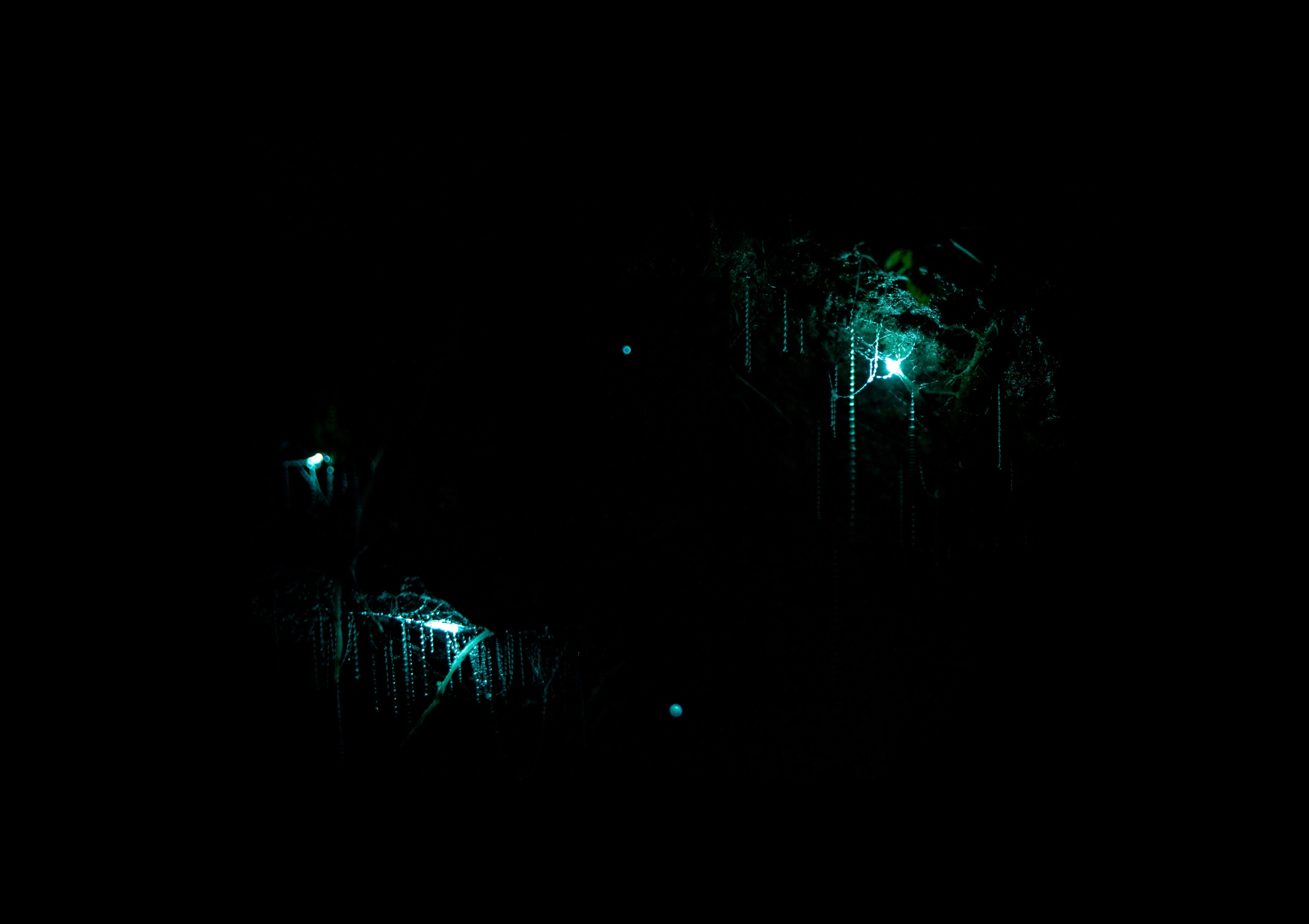
From Auckland, take an overnight to either Waitomo (to see the bioluminescent caves) or Rotorua (to explore the geothermal mudpools). Both are approximately 2.5 hours (one-way) from Auckland.
Day 3: Wellington
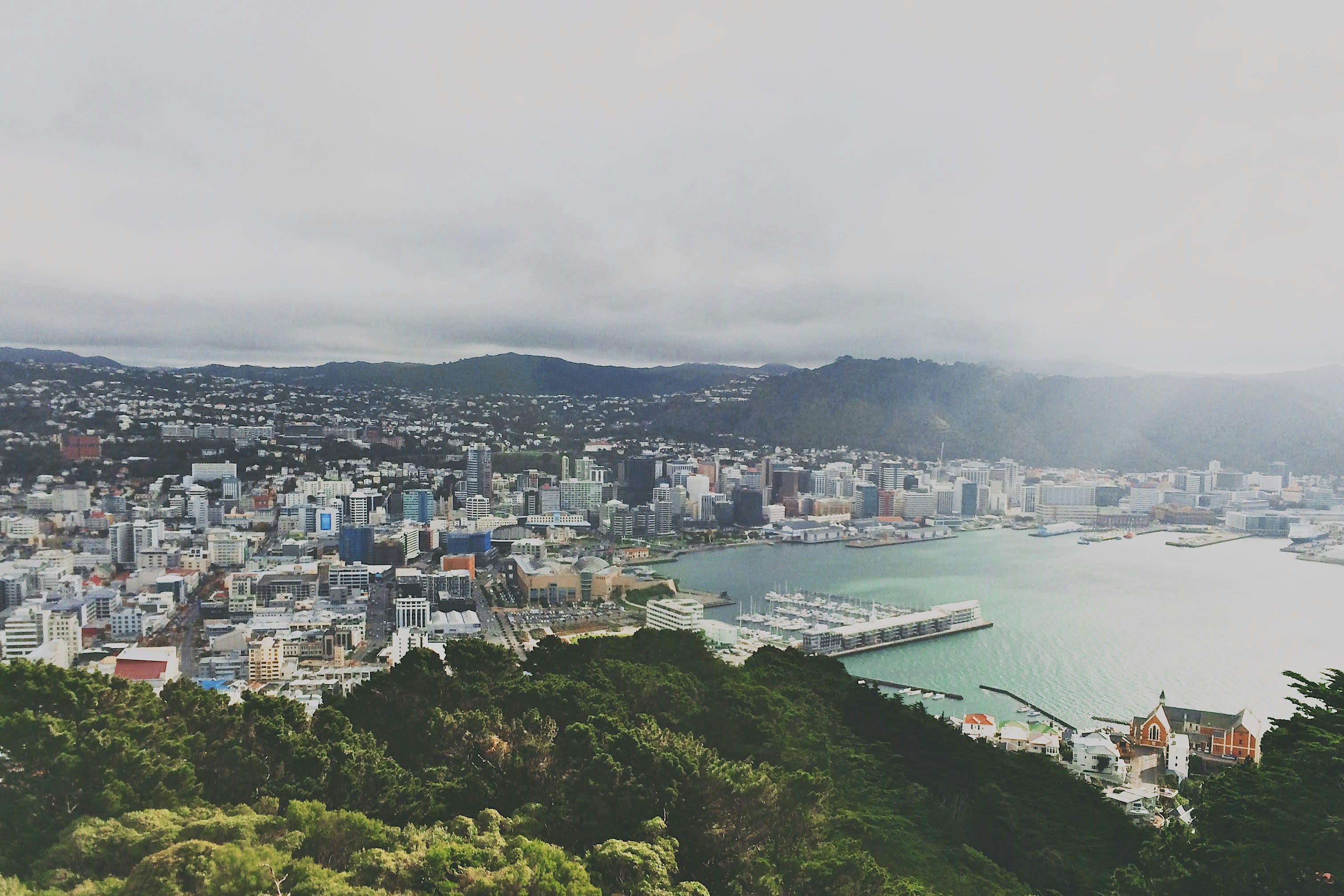
Catch an early-morning flight from Auckland to Wellington (flight time 1h10m) and spend the day wandering around the city’s cool cultural capital. Te Papa, the Museum of New Zealand, is the country’s largest museum. It offers six stories of exhibits on Maori culture, Kiwi flora and fauna and a rotating slate of incredible exhibits. After exploring for a few hours, it’s time for some sunshine and shopping. Cuba Street (named after a ship and not the country) provides just that. Once a tram route, now a pedestrian-only street. It’s home to independent boutiques and restaurants that please the eyes and the palate.
If you’ve still got gas in your tank, Zealandia is worth a trip. The world’s first fully fenced ecosanctuary is a haven for New Zealand’s rare and most threatened wildlife.
Day 4: Wellington to Nelson
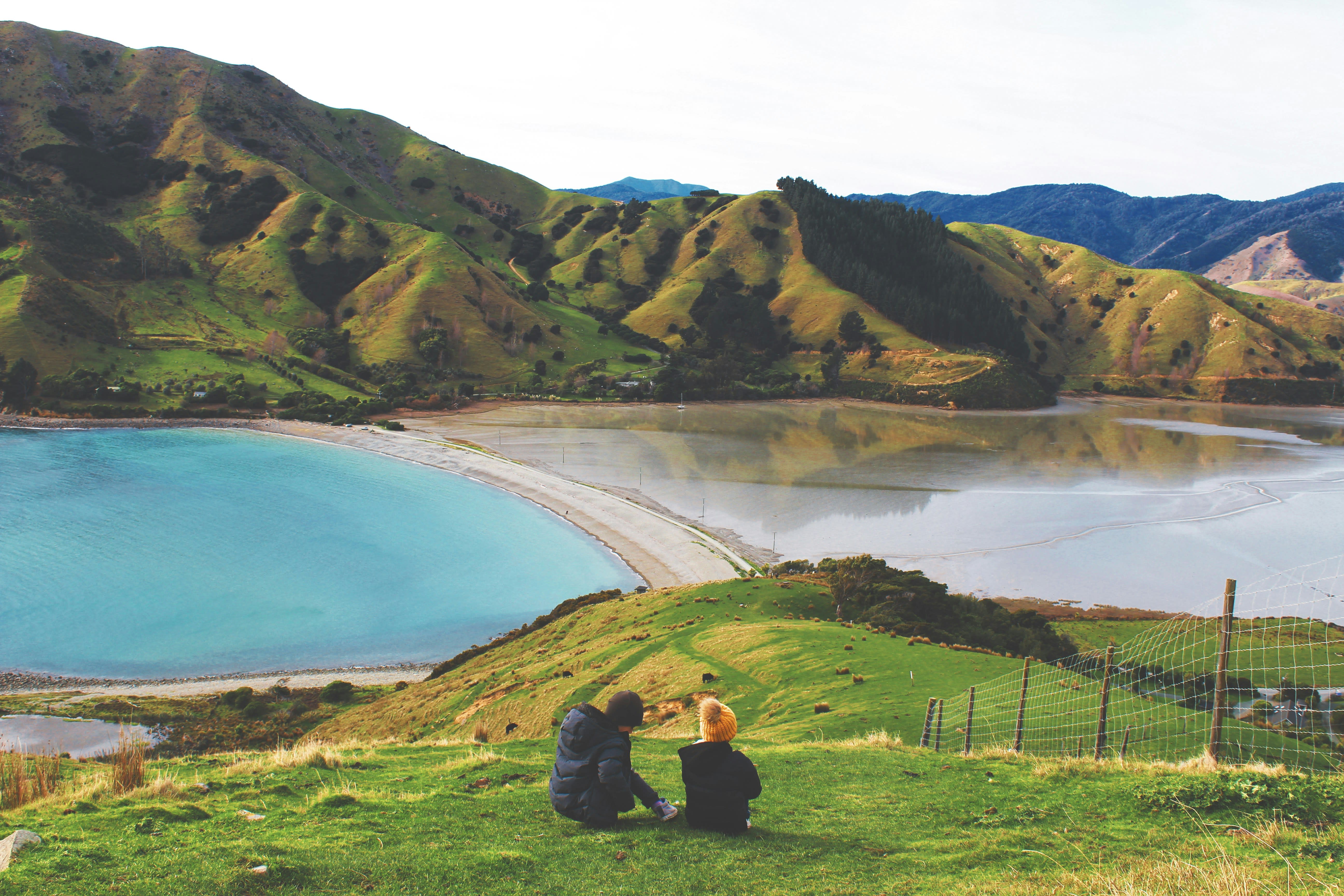
You’ll catch an evening flight to Nelson (45 minutes), but that leaves you with plenty of time to hike one of my favorite walks in the area. The Escarpment Track runs from Paekākāriki to Pukerua Bay and provides stunning views of the Kapiti coast. Rope bridges and steep, narrow pathways will have everyone feeling like a kid again. Located 1 hour outside of Wellington, take the train to Pukerua Bay and walk north to Paekākāriki.
Treat yourself to a coffee and baked good at Olde Beach Bakery before heading to the train station and making your way back to Wellington.
Day 5: Nelson to Abel Tasman
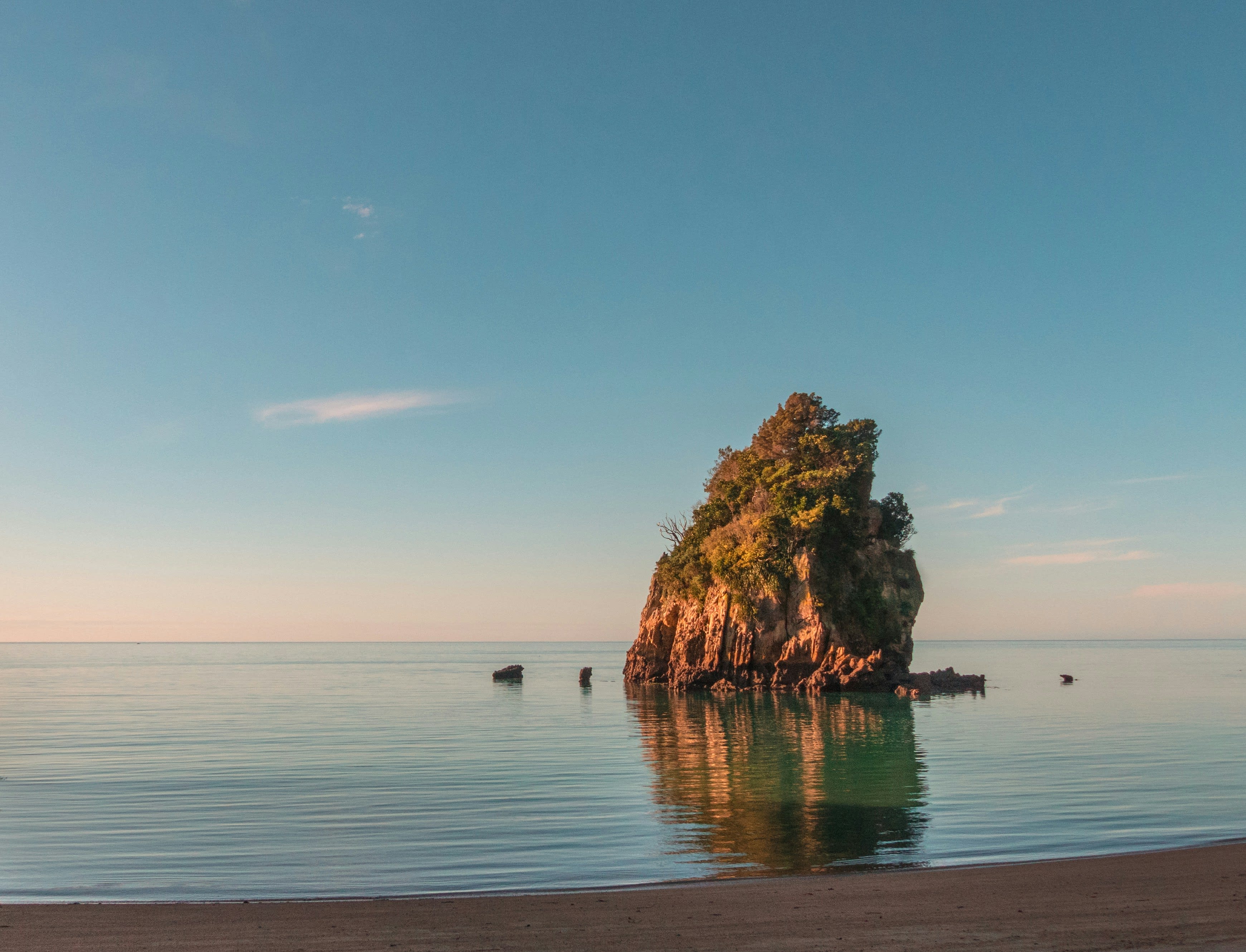
One hour from Nelson is Abel Tasman National Park, filled with gold sand beaches and stunning waters. The Abel Tasman Coast Track is one of New Zealand’s most popular great walks. If you only have one day, use the water taxi system (popular since the park has very few roads) for a drop-off at Medlands Beach. Walk to Anchorage (with a side trip to the stunning Cleopatra’s Pool) and get picked up there. Your feet will be tired, but your heart will be full.
Day 6: Abel Tasman down the Great Coast Road to Arthurs Pass
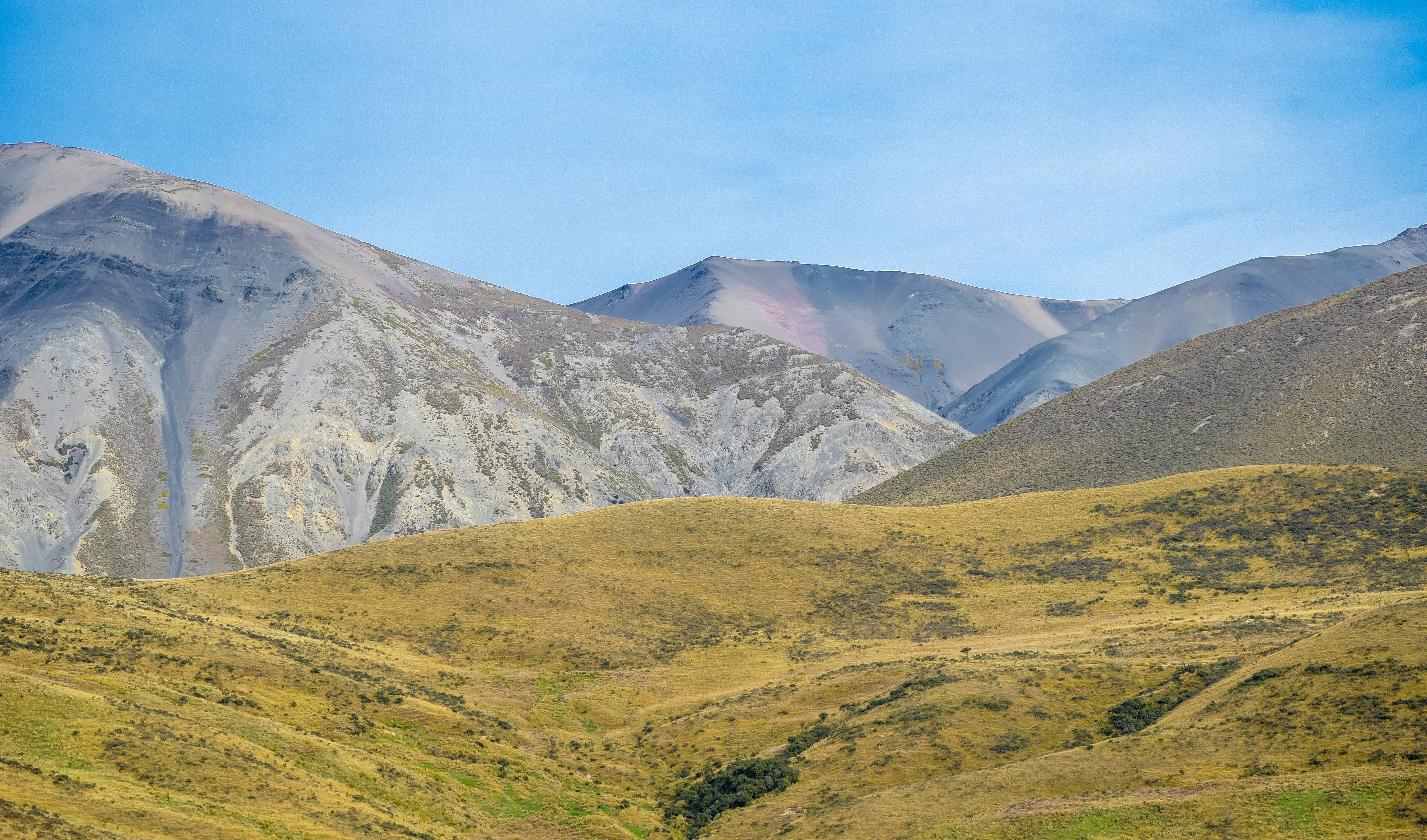
Your feet will get a rest today as you’ll be spending a lot of the day driving. From Abel Tasman, you’ll make the 4-hour drive to Westport. Don’t worry, there’s plenty of places to stop and marvel at the rural countryside. From there you’ll begin a drive along the Great Coast Road, a 90 mile stretch of road that’s received international acclaim for its beauty. Wind your way between lush forest to your left while marveling at the stunning coastline to your right. Make sure to leave yourself plenty of time to stop wherever your whims take you. My personal favorites include Irimahuwhero Lookout, Truman Track and awe inspiring Punkaiki Panckae Rocks
In Greymouth, take a pit stop to refuel then begin your final drive for the day to the alpine wonder that is Arthur’s Pass National Park. The village of the same name is tiny so make sure you reserve accommodation well in advance.
Day 7: Arthur’s Pass
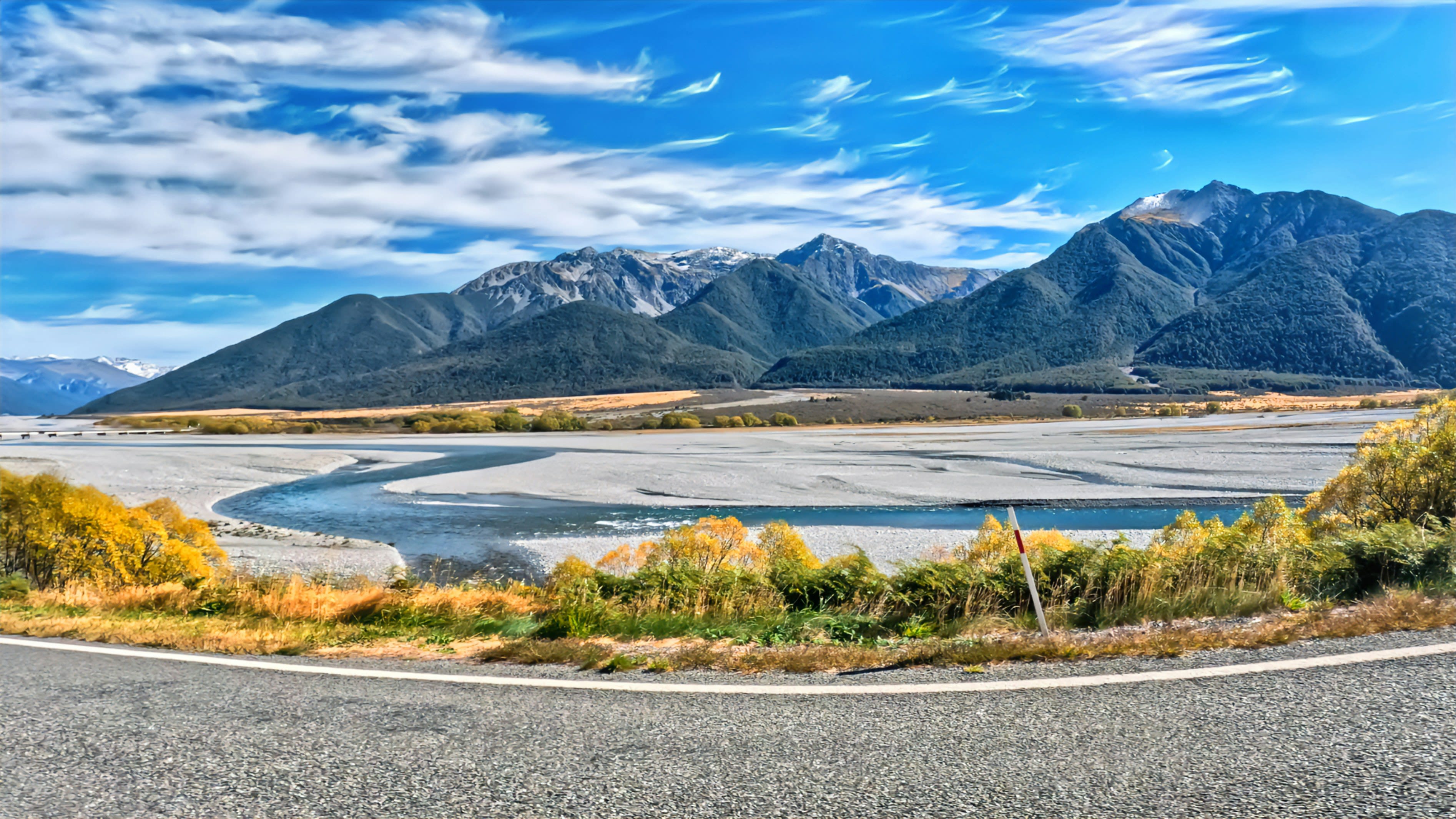
The highest pass over the Southern Alps is a lesson in juxtaposition. The eastern side of the park is filled with vast vistas of riverbeds and beech trees, while the western side is home to lush forests. Popular hikes in the area include Devil’s Punchbowl, Otira Valley and Bealey Valley. Spend the day exploring and enjoy an extra night sleeping in this serene mountain town.
Day 8: Hokitkia Gorge to Franz Joseph
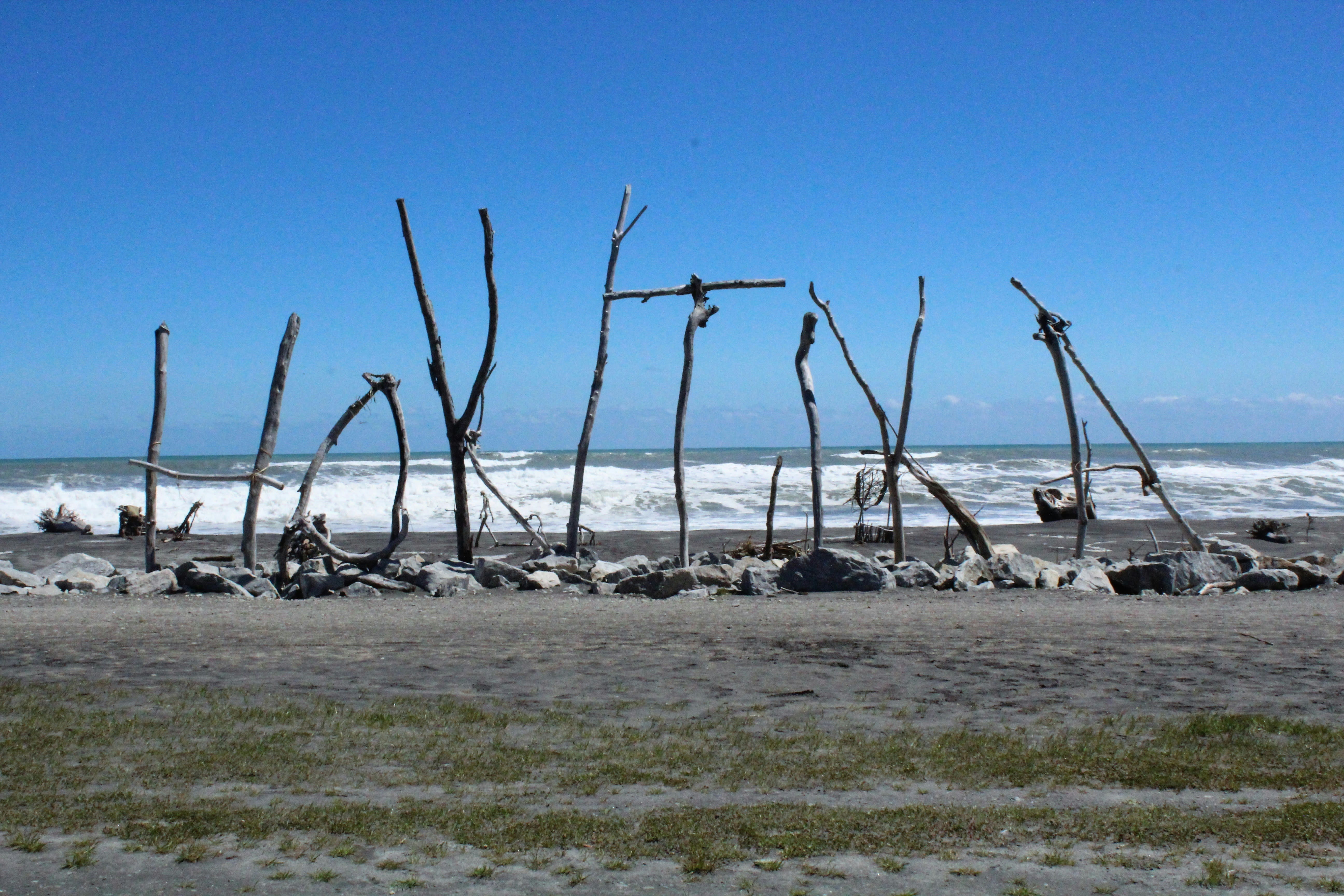
Begin your morning by driving to the town of Hokitika. Spend an hour or two wandering the main streets where many artisans (including those of the beloved greenstone) sell their wares. Then it’s time to see the stunning Hokitika Gorgewhere chalky limestone cliffs meet bright turquoise waters. The easy-to-access trail snakes through verdant green forests and gives you the chance to hike over the ubiquitous Kiwi rope bridges. Give yourself two hours for this out-and-back trail and make sure to pack your camera. From there, you’ll head to the town of Franz Josef, the access point to the Franz Josef glacier.
At this point in the trip, you’ve been hiking a lot and deserve some luxurious relaxation. Enter Waiho Hot Tubs, a private hot tub in the middle of the forest, for a way to unwind.
Day 9: Franz Joseph to Wanaka
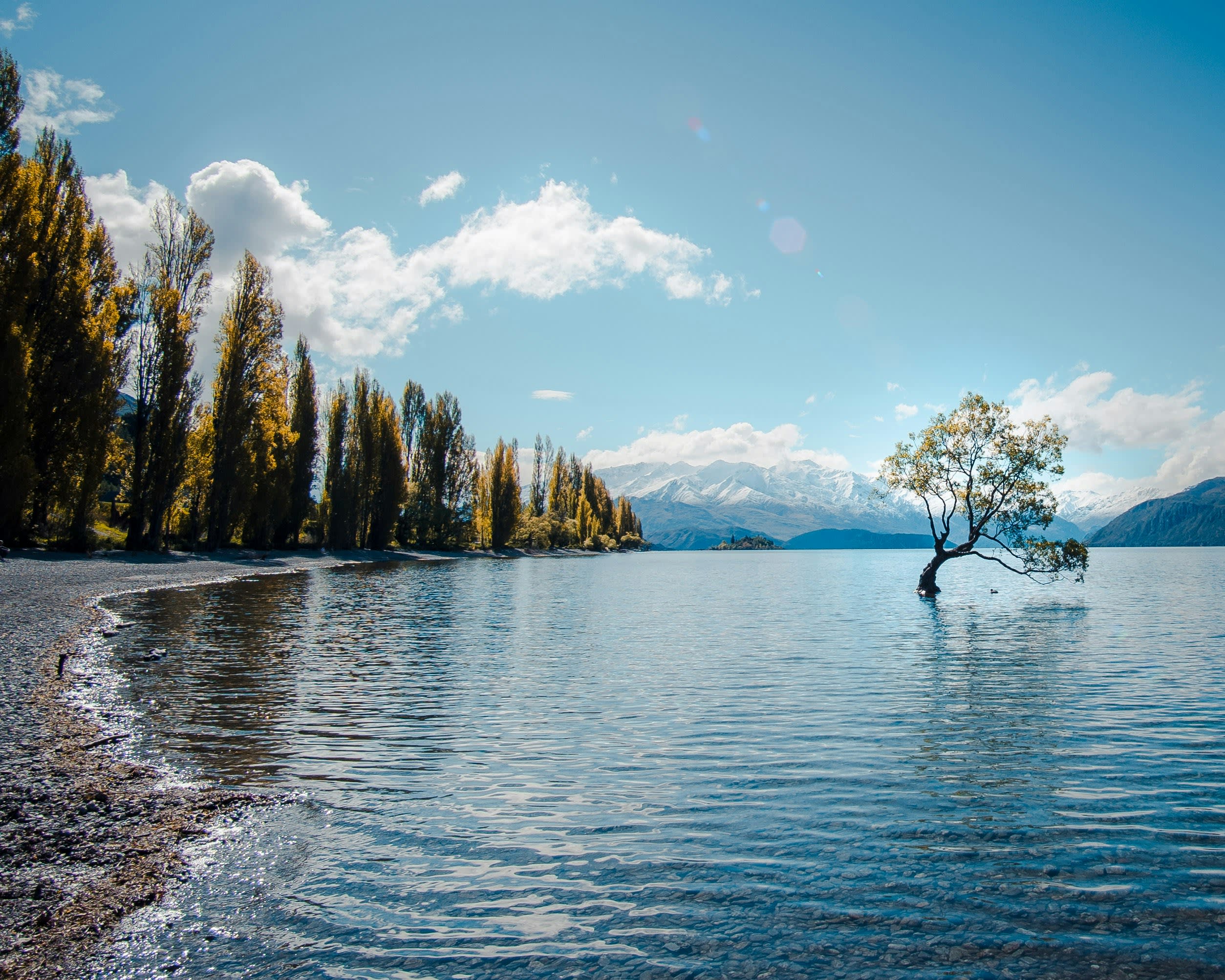
Today, it’s time to explore Glacier Country. There are a variety of ways to experience Franz Josef glacier, including hiking, kayaking and scenic flights. Give yourself until midafternoon to immerse yourself in the myriad shades of blue and white beauty.
Then it’s time to drive to Wanaka (drive time approximately four hours), a resort town located on the edge of a lake with the same name. Find a restaurant for a nice meal and head to bed early — you’ve got a big day ahead!
Day 10: Wanaka to Roys Peak to Te Anau
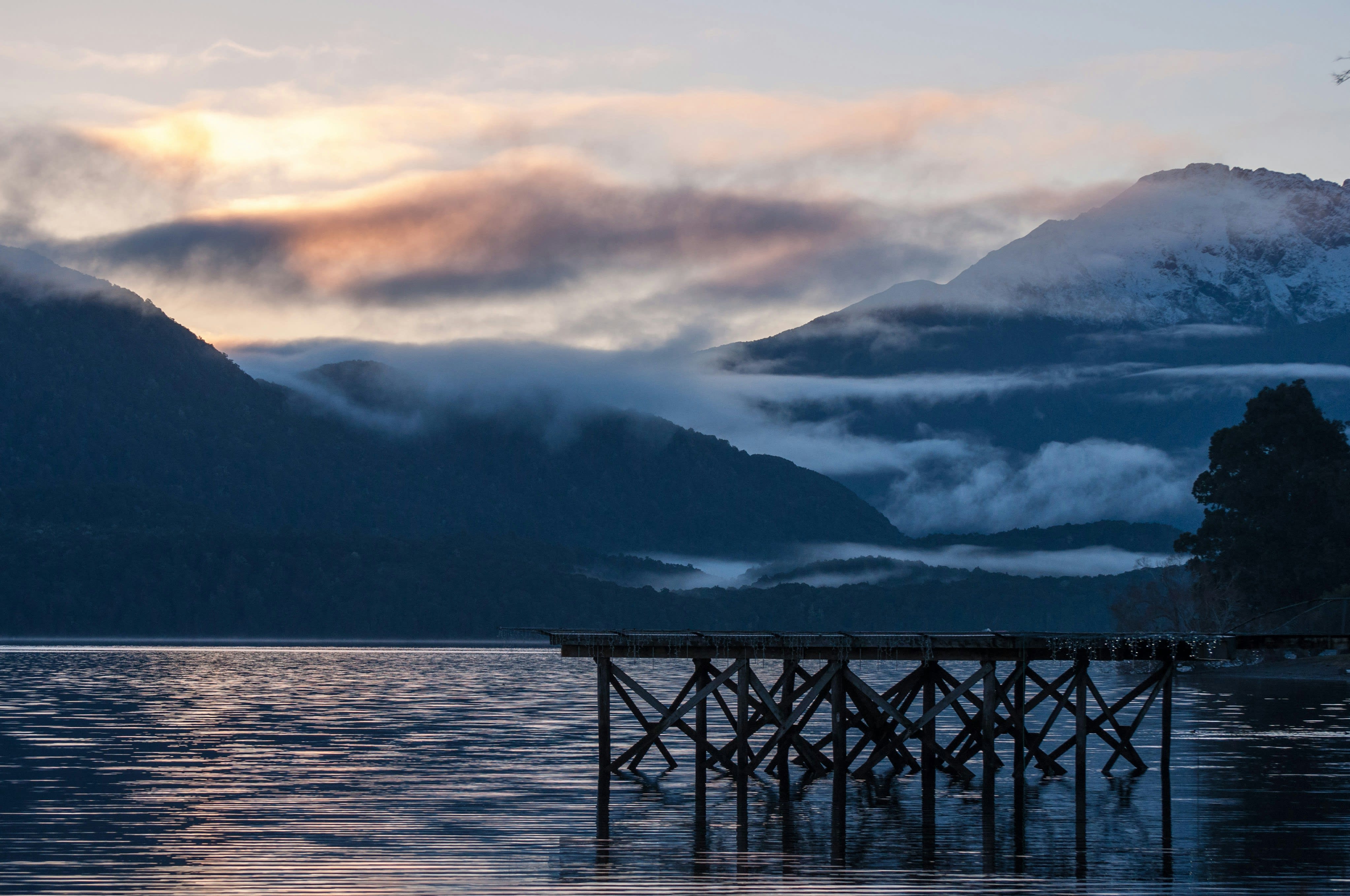
Be ready to wake up before the sun to conquer New Zealand’s most popular day hike. Roy’s Peak is a strenuous hike not for the faint of heart. It’s 3–4 hours of walking at a high incline up the side of a mountain. But the view at the top of the peak is worth the effort. It is a panoramic vista of Lake Wanaka and the snow-capped mountains of the Southern Alps that will prove to you that the pain was in fact worth the gain. Get there as early as possible. The parking lot fills up quickly and the heat can be blistering. There is no shade, so make sure you pack plenty of sunscreen and water. Go slow and stop to appreciate the beautiful country you’re tramping through.
Once you’ve made your way back down the mountain, head to town and enjoy a hearty lunch — you’ve earned it. You’ll be so tired that the 3-hour drive to the town of Te Anau (the gateway to Fiordland National Park) will be a reprieve.
Days 11-13: Fiordland National Park
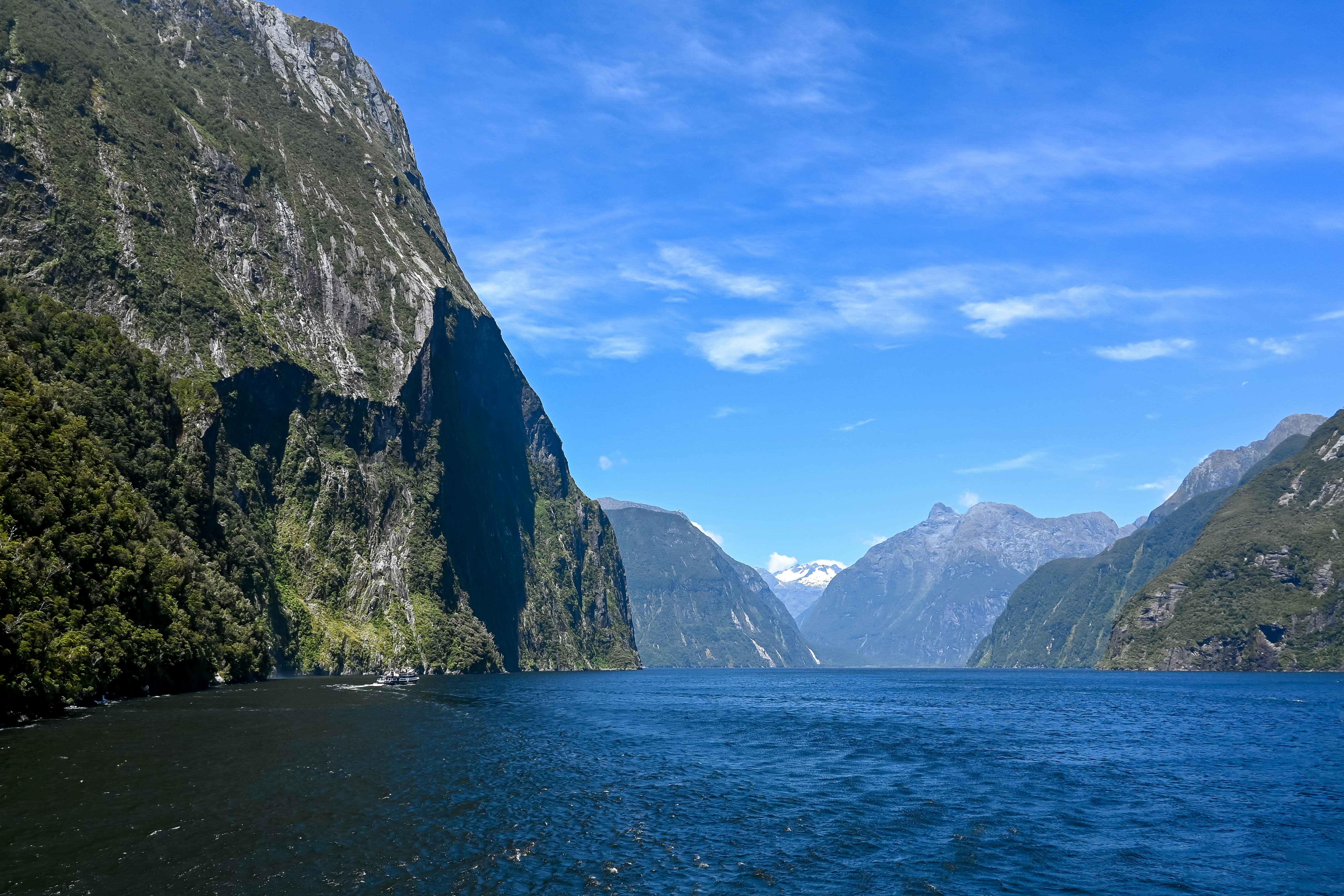
After nearly two weeks of moving nearly every day, enjoy three days of unpacking and setting up shop in one place. You’ll spend the three days exploring Fiordland National Park, the largest of New Zealand’s 13 national parks at nearly 5,000 square miles. It’s known internationally for its fjords (which are sounds) particularly Milford Sound, but there is so much more to explore. Mountains, lakes and rainforests are all waiting to be explored. My favorite hikes, most of which take about ½ a day, are:
Key Summit Hike: Takes you through a mossy forest to a small alpine lake.
Gertrude Saddle: Provides incredible views of Milford Sound (only for the most experienced of hikers).
Lake Marian: A trail which has a very rocky path (that makes you feel like a kid again) but leads to a large lake only accessible on foot.
In addition to your hikes, you’ll want to give yourself at least a day to explore Milford Sound (and the less famous but still gorgeous Doubtful Sound). This is quite literally where the road ends and the one-lane tunnel and switchback roads can be intimidating to maneuver. You can drive yourself to the cruise terminal to choose from a variety of vendors for a two-hour ride around the sound. Or there are many companies in Te Anau that will pick you up at your hotel. They take you on a hike on a portion of the Milford Trek and then on a cruise, all while providing you with lots of knowledge about the area. I went with Trips & Tramps and highly recommend it. No matter which route you choose to go, make sure you bring waterproof gear as Fiordland is one of the wettest places on Earth!
Day 14: Te Anau to Queenstown
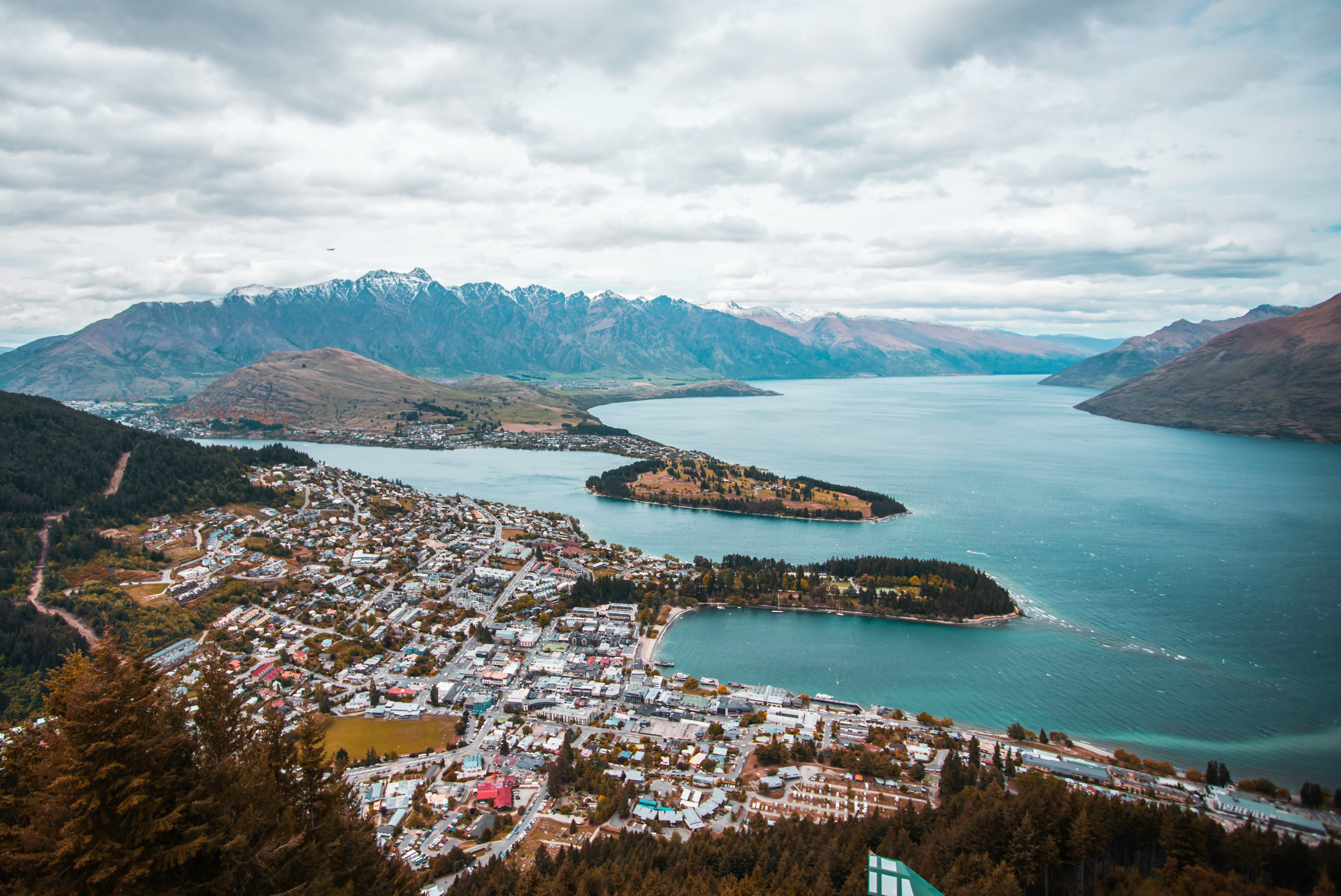
It’s time to get your adrenaline pumping in the birthplace of bungee jumping! You’ll depart Te Anau nice and early to make the 2.5 hour drive to Queenstown. From there, you’ll be spoiled with choices to get your heart racing. There are more extreme options like skydiving, paragliding and bungee. There are more family-friendly activities like the Shotover Jet, which reaches maximum speeds of 50mph through white water rapids all while doing 360-degree turns or Skyline Luge.
Make sure you stop at the world-famous Fergburger. Known for its long lines, I highly recommend calling ahead and placing your order over the phone. Nothing feels better than walking past a line blocks deep and going straight to the pickup counter, not wait required!
Day 15: Queenstown to Mount Cook to Lake Tekapo
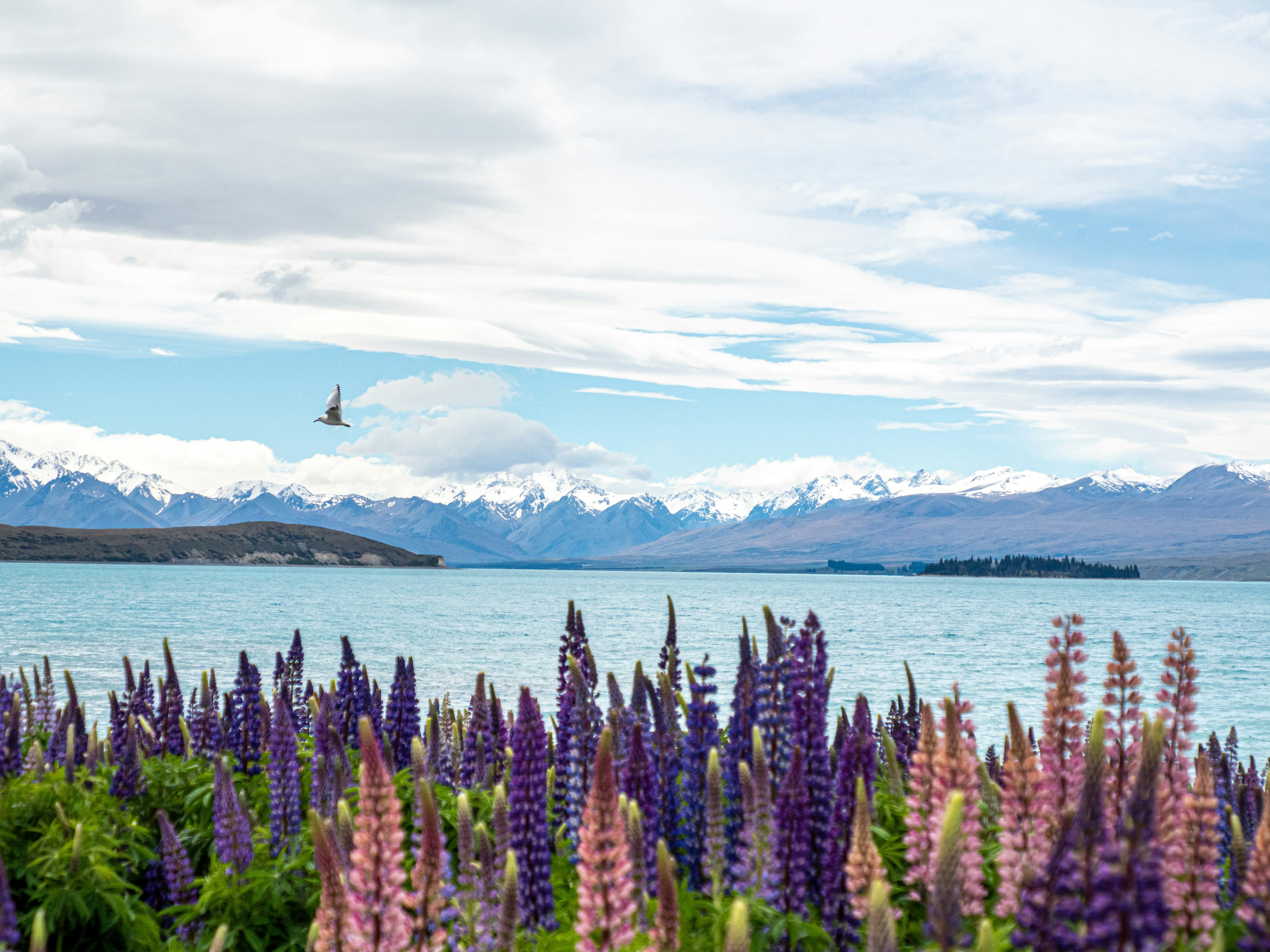
It’s another early morning departure to beat the parking lot traffic. This time you’ll be heading to Aoraki/Mount Cook National Park. Mount Cook is the highest peak in New Zealand at over 12,000 feet and is where Edmund Hilary prepared for his Everest ascent.
You’ll want to aim to get to the Hooker Valley Track carpark before 8 am (after which parking can become a true nightmare. Then you’ll enjoy Hooker Valley Track, another of New Zealand’s most popular day hikes. This 7-mile track takes roughly 2.5 hours to complete but is less physically demanding than many of the country’s options (as there is relatively little elevation gain). You’ll wind through valleys filled with wildflowers, crystal clear lakes and end near the Mueller Glacier. This was one of my favorite hikes. The mountains of the Southern Alps are wonder-inducing and the color palette of white mountains, pristine blue sky and green and ochre hues of the foliage took my breath away.
Once you’ve explored to your hearts content, you’ll drive a little over an hour to Lake Tekapo, where you’ll stop for the night. The aquamarine lake is a beauty year round, but November through January is when it really shines. During this 3-month stretch, the lakeshore is saturated with lupines in all shades of purple, pink and white. Make sure to stop by the Church of the Good Shepherd. This one-room stone church surrounded by large peaks at sunset made me instantly think of the phrase “a faith to move mountains.
Day 16-17: Christchurch
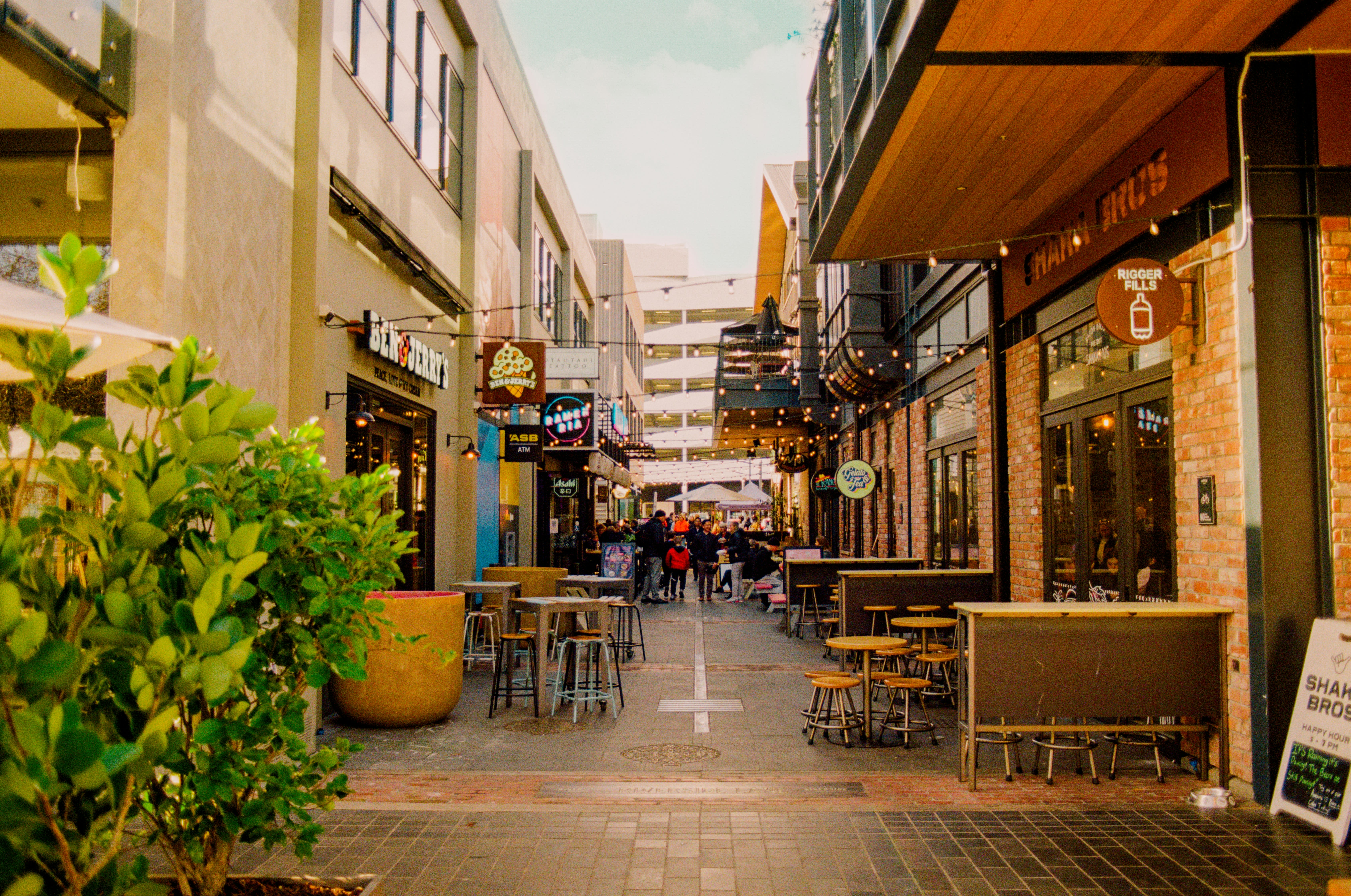
Say goodbye to Lake Tekapo and make the 3-hour journey to Christchurch. Enjoy the fact that other than returning your rental car to the airport, the driving portion of your trip is over! After many miles spent exploring the often sparsely populated land, it’s time to enjoy city life in Christchurch. The 2nd largest city in New Zealand was rocked in February of 2011 when a large earthquake killed 185 people and damaged (or destroyed) thousands of buildings. The effects of the devastation are still apparent even 14 years later. But out of this destruction, a creative resilience has shone through. It’s a city reinventing itself while paying homage to its historical roots.
Walk along the Avon River. It winds through the city or enjoy the free Botanic Gardens in Hagley Park. You can literally stop and smell the roses. It’s not hard to see why Christchurch has been called the Garden City.
Make sure to see the Transitional Cathedral, an A-frame building made nearly entirely out of cardboard by “disaster architect” Shigeru Ban. Built in the wake of the earthquake when the Christchurch Cathedral was damaged extensively, the building has become world renowned as an enduring symbol of the strength of Christchurch.
After nearly three weeks in this land at the end of the world, your bags should be filled with souvenirs, your feet should be sore and your heart should be unendingly full.
Need to know
Important Note: New Zealand’s road system is constantly being battered by weather and harsh environments. Things are often connected by one road, and one road only. Make sure you are keeping up with road closures and make sure your accommodations have generous cancellation policies. I learned this the hard way when the night before a 4-hour drive from Franz Josef to Wanaka, I learned the road was going to be closed for at least two weeks. The only other route was nine hours (and involved circling back through many things I’d already seen).

Travel Advisor
Emily Stowell-Bui

Get in touch with Emily
Did you like this guide? Reach out to customize and book your own experience. Or, just to chat about travel in general.
You can normally expect a response from Emily within a business day or so. You’ll also be subscribed to our travel newsletter (you can unsubscribe at any time).
For more inspiration and insider recommendations, visit our New Zealand page.